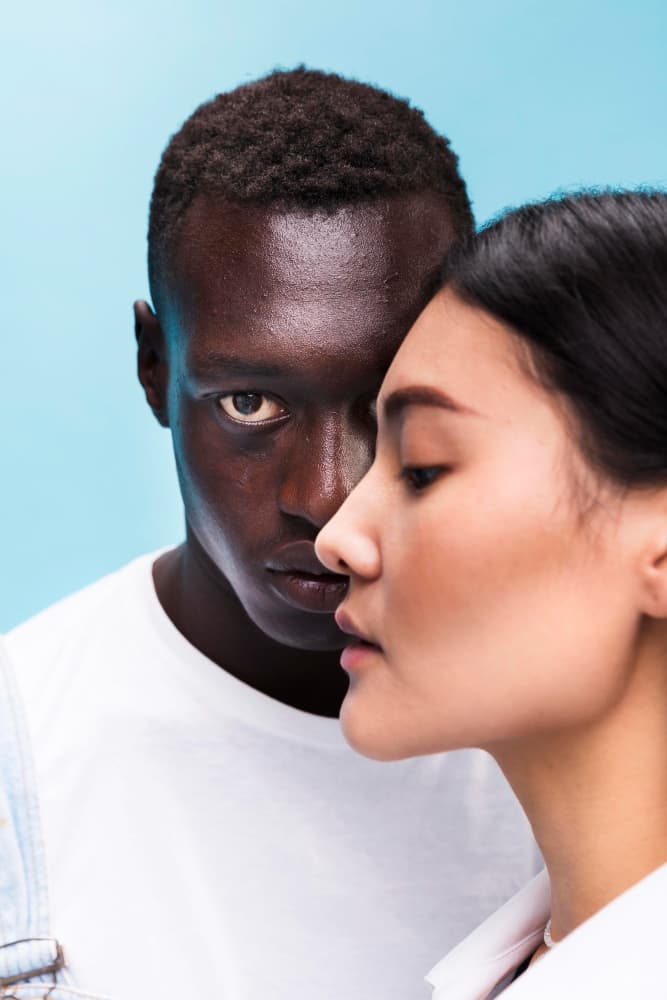Ethnicity nose shapes refer to the distinct nasal characteristics that are common among specific ethnic or racial groups. These characteristics include the size, width, height, bridge shape, and nostril flare of the nose. Different ethnicities tend to have unique nasal features that contribute to their overall facial appearance.

 4.7
4.7
Would you like to receive information about the operations from Vanity Doctors?
As Vanity, we can give you information about the operation you are considering.
Ask the DoctorNose shapes can vary significantly among different ethnic groups, often reflecting unique genetic and cultural characteristics. As a result, the field of cosmetic surgery has evolved to offer specialized procedures known as “ethnic nose jobs” or “ethnic rhinoplasty,” tailored to enhance the aesthetics while preserving the individual’s ethnic identity. In this article, we will delve into the fascinating world of ethnic nose job procedures, focusing on various ethnicities and their distinctive nose shapes.
In Turkey, Ethnic nose surgery, commonly referred to as ethnic rhinoplasty, is a specialized branch of plastic surgery that embraces the distinct characteristics of different ethnicities while aiming to harmonize facial proportions. This surgical approach acknowledges the cultural significance of various nose shapes and sizes, particularly among populations like Middle Eastern individuals. The ‘middle eastern nose job before and after’ comparison photos often displayed by clinics showcase the potential transformations that can be achieved through this procedure.
Selecting the right professional for an ethnic nose surgery is a crucial step. The quest for the ‘best ethnic nose job surgeon’ involves researching surgeons with a demonstrated understanding of diverse facial aesthetics and an extensive track record in ethnic rhinoplasty procedures. Patient testimonials and before-and-after images can provide insights into a surgeon’s skills and the potential outcomes of the surgery.
For those seeking non-permanent changes to their nasal appearance, ethnic nose filler procedures offer a different avenue. These minimally invasive treatments involve the strategic use of dermal fillers to sculpt the nose and create more balanced proportions. While the effects are temporary compared to surgery, ethnic nose filler procedures can provide subtle enhancements that honor one’s ethnic background.
Understanding Ethnic Nose Diversity
The diversity of human populations has led to a wide range of nose shapes and sizes. Different ethnicities have developed distinct nose characteristics that often play a role in their cultural identities. For instance, individuals of Asian, African American, Middle Eastern, and European descent may exhibit specific nose features that are reflective of their heritage.
“Ethnicity by nose shape” is a concept that attempts to draw connections between a person’s ethnic background and the characteristics of their nose. While it’s true that certain ethnic groups might exhibit specific nose shapes more frequently due to genetic and ancestral factors, it’s important to approach this idea with caution. Nose shape is a complex trait influenced by a range of genetic, environmental, and evolutionary factors. Trying to determine someone’s entire ethnicity solely based on their nose shape oversimplifies the rich diversity and complexity of human populations.
A ‘nose types chart by ethnicity’ is utilized by anthropologists and geneticists to examine the physical variations among human races, showcasing the diverse nasal structures across different ethnic groups.
Asian Nose Job:
In the case of Asian rhinoplasty, the procedure aims to address common concerns such as a low nasal bridge, a less projected tip, and wider nostrils. Surgeons work to refine these features while maintaining the harmony between the nose and other facial structures, ensuring a balanced and natural look. By utilizing techniques that cater to Asian nose anatomy, patients can achieve a more defined and proportionate appearance.
African American Nose Job:

African American rhinoplasty focuses on enhancing the nose while honoring the unique characteristics of this ethnicity. Some individuals seek to refine nostril width, correct a dorsal hump, or adjust the nasal tip. Skilled surgeons work to achieve results that celebrate the natural beauty of African American features, enhancing facial harmony and self-confidence.
Middle Eastern Nose Job:
Middle Eastern rhinoplasty often involves addressing concerns related to dorsal humps, nasal tip projection, and bridge shape. Patients seeking Middle Eastern ethnic rhinoplasty are looking to refine their noses while maintaining the elements that define their heritage. Surgeons take into account the cultural significance of these features and aim to create results that align with the patient’s desires.
European Nose Types:
Even within European ethnicities, there is a wide range of nose shapes. From the Roman nose with its straight bridge to the Greek nose with a slightly concave shape, surgeons tailor their approaches to achieve the desired results while respecting the individual’s heritage.
Before and After Transformations
The results of ethnic nose job procedures can be truly transformative. Before and after photos showcase how skilled surgeons can enhance the aesthetics of the nose while preserving the patient’s ethnic identity. These visual representations provide insight into the potential changes that can be achieved through ethnic rhinoplasty.
Finding the Right Surgeon
Selecting a surgeon experienced in performing ethnic nose job procedures is crucial to achieving the desired outcome. Research thoroughly and consider consulting with multiple surgeons to find the one who understands your unique goals and cultural preferences.
Ethnic nose job procedures offer individuals the opportunity to enhance their facial aesthetics while maintaining their ethnic identity. Whether seeking an Asian, African American, Middle Eastern, or European rhinoplasty, patients can achieve beautiful and natural-looking results through the expertise of skilled surgeons who appreciate the importance of ethnic diversity and individuality.
What Are the Regions With Different Ethnic Nose Shapes?
Nasal shapes can vary across different regions and ethnic backgrounds. Here are some examples:

African and African American Noses: These often have wider nostrils, a broader nasal base, and a lower nasal bridge.
Asian Noses: Asian noses typically feature a flatter bridge, shorter nasal length, and less projection. Nostrils can vary from narrow to slightly flared.
Caucasian Noses: Caucasians commonly have a higher nasal bridge, narrower nostrils, and greater projection. The specific shape can differ among European ethnic groups.
Hispanic/Latino Noses: These noses often exhibit a moderately projected bridge, wider nasal base, and nostrils that can range from slightly flared to more prominent.
Middle Eastern Noses: Middle Eastern noses are often characterized by a prominent, slightly convex bridge, and rounded or slightly flared nostrils.
Indigenous Noses: Indigenous populations display variations based on their geographic origins, with distinct traits that may be specific to certain groups.
Why Does Your Ethnic Nose Shape Matter for Rhinoplasty?
The significance of your ethnic nose shape in rhinoplasty is multi-faceted:
Cultural Sensitivity: Respecting and preserving your ethnic identity and facial features is essential, as many individuals wish to maintain their heritage even while enhancing their appearance.
Aesthetic Harmony: Altering your nose’s appearance in a way that disregards your ethnic characteristics can lead to an unnatural look. Rhinoplasty aims to create balance between your nose and other facial features.
Functional Considerations: Changes made during rhinoplasty can impact nasal function, such as breathing. Ensuring that both form and function are addressed is crucial.
Customized Approach: Surgeons tailor their techniques to your specific ethnic nose shape. This approach ensures the best possible outcome that aligns with your individual features.
Patient Satisfaction: By enhancing your natural features and considering your ethnic background, surgeons can help you achieve results that align with your goals, leading to greater satisfaction.
In summary, understanding and embracing your ethnic nose shape is vital in rhinoplasty. Surgeons work to enhance your appearance while maintaining cultural sensitivity and addressing both aesthetic and functional aspects, resulting in a harmonious and satisfying outcome.






